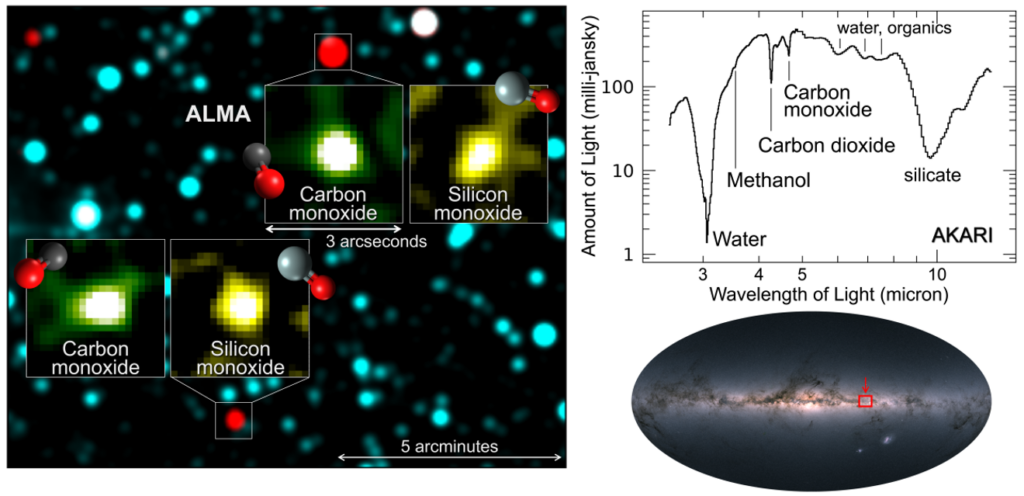Mysterious Interstellar Icy Objects—Takashi Onaka (Emeritus Professor), Itsuki Sakon (Associate Professor)
Like snow forming in clouds on a freezing winter day, interstellar ices form in specific regions of the galaxy. A research team led by Associate Professor Takashi Shimonishi of the School of Science (Faculty of Science and Graduate School of Science) at Niigata University, Emeritus Professor Takashi Onaka and Associate Professor Itsuki Sakon of the Graduate School at The University of Tokyo conducted molecular gas observations of two enigmatic interstellar objects using the Atacama Large Millimeter/submillimeter Array (ALMA) in Chile. These objects were previously discovered by the Japanese infrared satellite AKARI and are known to be rich in interstellar ices containing water and organic molecules, though their properties remained unclear. The ALMA observations have revealed the distance, motion, size, and chemical composition of the molecular gas associated with these objects. However, their characteristics do not match those of any previously known interstellar objects where ices have been detected. This study suggests that these two objects may represent a new class of interstellar icy objects that provide an environment conducive to the formation of ices and organic molecules. The findings were published in The Astrophysical Journal on February 25, 2025.
Related pages

Figure: (left) Emissions of molecules from mysterious icy objects captured by the ALMA telescope. The background image is an infrared color composite, with the 1.2 µm wavelength light colored in blue and the 4.5 µm light colored in red [based on infrared data from 2MASS and WISE]. (Upper right) Infrared spectrum of the object at the upper side of the left figure taken with the AKARI satellite. Absorption bands due to ice and dust are seen. (Lower right) Positions of the two icy objects on the Galactic plane (modified from ESA/Gaia/DPAC image). Credit: ALMA (ESO/NAOJ/NRAO), Shimonishi et al. , ESA/Gaia/DPAC




